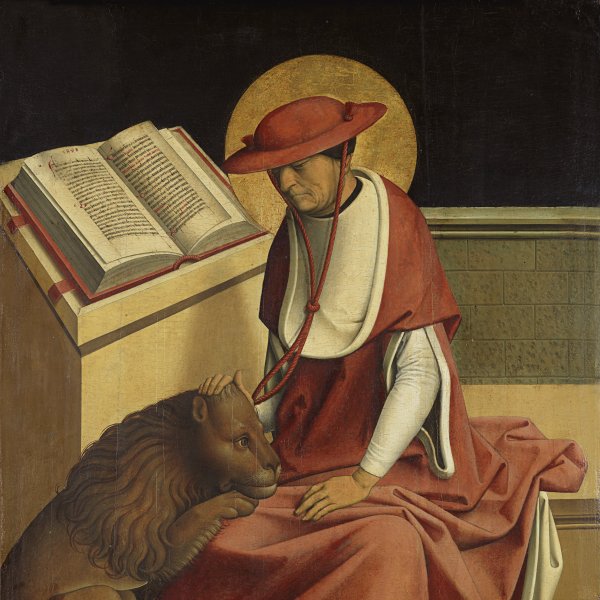Master of Grossgmain
This anonymous Austrian artist was active around 1500. His name derives from a now dismantled altarpiece of The Ascension in Grossgmain near Salzburg. Nothing is known of his origins. Due to stylistic similarities between the work of this painter and that of Rueland Frueauf the Elder, some of his works were erroneously attributed to Bartholomäus Zeitblom, a fact that has made his work difficult to identify. It is now generally accepted that he studied in Frueauf’s workshop. According to Zimmermann, the Master of Grossgmain used the same technique as Frueauf for the decoration of the backgrounds of his works, while his manner of inserting the figures and architectural elements, which are somewhat constricted within the pictorial space, is highly characteristic of his style, resulting in a rather artificial perspectival effect.
The four panels for the Grossgmain commission were part of an altarpiece dedicated to the Virgin. Two further works have been tentatively associated with this project, depicting The Virgin and Child and Christ as the Salvator Mundi. In addition, other religious works have been attributed to the Master of Grossgmain, including The Virgin and Child enthroned with Saint Thomas and Donors of 1483, and The Coronation of the Virgin (both Národní Gallery, Prague); The Education of Christ (Museum of Fine Arts, Boston); and Saint Jerome (Museo Thyssen-Bornemisza, Madrid). The attribution of the Pretschlaipfer Triptych, formerly in Berchtesgaderhof, Salzburg (now Österreichische Galerie Belvedere, Vienna), is still the subject of debate.


